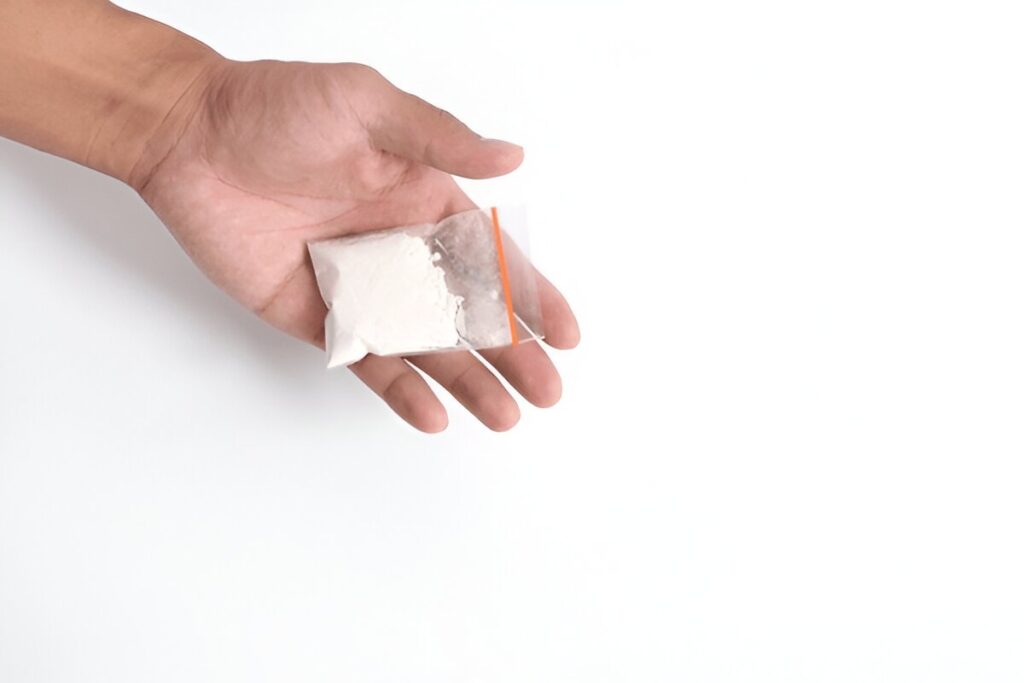- KNOWLEDGE BASE
- EATING DISORDERS
- General Topics
- No posts found for the specified taxonomy and term.
- General Topics
- EATING DISORDERS

SWISS MEDICAL EXPERTISE: ZURICH, MALLORCA, LONDON, MARBELLA


CONDITIONS WE TREAT
PROGRAMS
Intensive residential treatment program starting from 4 weeks. Location: Mallorca, Zurich, London.
Comprehensive second opinion assessments for both psychiatric and general health concerns. Location: Mallorca, Zurich, London
ADDITIONAL INFORMATION





7 Minutes
CONTENTS
Derived from the famous coca plant, cocaine is a stimulant drug globally known for its potent euphoric effects. The exhilarating effects of using cocaine, such as heightened alertness, mental clarity, sharpness, and boosted energy, tempt millions of people to continue using it regardless of its long-term side effects. A critical concern for those using the drug is how long it stays in the body. [1]
So, how long does cocaine stay in your system? The duration can vary based on multiple factors, such as the duration of use, quantity consumed, method of consumption, and many individual factors. Moreover, the type of test used can also play a crucial role in determining whether cocaine is detectable in the body or not. This knowledge can provide users with valuable information, especially if they expect to face drug tests.
To understand more about the cocaine detection window, which refers to the period during which cocaine or its metabolites can be detected in the body, it is crucial to learn more about how the body metabolizes it. Regardless of how cocaine is used, the drug enters the bloodstream, from where it travels up to the central nervous system. Inside the brain, it inhibits the reabsorption of dopamine, a neurochemical responsible for generating reward and pleasure. The reduced reabsorption due to cocaine causes a surge in dopamine levels, leading to the classic “high” or euphoria that users crave. [2]
The body gets rid of cocaine with the help of the liver, which breaks it down into different metabolites. Ecgonine methyl ester and benzoylecgonine are the two primary metabolites produced as the liver breaks down cocaine. Interestingly, most cocaine detection tests work by checking the presence of these metabolites in the blood instead of cocaine itself.
Cocaine is known to have a short half-life, typically around one hour. This means that within one hour of use, the body gets rid of half the total ingested amount. However, its metabolites may persist in the body longer, giving an extended window to perform detection tests.
In general, anything that affects cocaine metabolism can alter the amount of time it stays in the system. Some of these factors directly and indirectly affecting cocaine in system are explained below:
How a person uses cocaine can directly impact its metabolism. For instance, snorting leads to slower, more sustained euphoria as the drug is slowly broken down and excreted. Conversely, smoking speeds up the metabolism, making the body break cocaine down and remove it much more rapidly. Remember that regardless of the method of ingestion, specific cocaine metabolites persist in the body at the same time.
The amount of cocaine a person consumes, in addition to the frequency of use, can significantly affect the overall detection window. For instance, a one-time user can eliminate cocaine and its metabolites faster than a chronic user. Long-term cocaine users tend to accumulate cocaine metabolites over time, which may linger in their bodies for a longer duration.
Combining the use of cocaine with other substances, such as opioids, alcohol, or other stimulants, can also complicate its excretion process. For instance, using cocaine with alcohol can lead to the production of a chemical called cocaethylene, which persists in the body for a longer time than either of the substances. Cocaethylene is also more toxic, particularly for the heart, and can prolong the time cocaine remains detectable in most drug tests. Polydrug use also strains the liver and renal system, making it difficult for them to eliminate cocaine and prolonging its detection time in the body.
Aging can slow down the metabolic activities in the brain. Consequently, older individuals generally take a longer time to eliminate cocaine from the body than their younger counterparts. This delay can be attributed to the declining kidney and renal functions that may not be working as efficiently as before to excrete cocaine.
Body mass, including fat levels, can significantly influence cocaine metabolism and elimination. Those with higher fat percentages store cocaine metabolites for prolonged durations, making them easily detectable by most tests. Those with lower fat levels, on the other hand, can remove the drug much more rapidly.
Urine pH describes the level of acidity or alkalinity of a person’s urine and is an essential determinant of the rate at which the body excretes cocaine metabolites. An acidic environment favors cocaine excretion, whereas alkaline urine can considerably slow it down.
The liver is the detoxification center of the body and the primary organ responsible for breaking down cocaine and converting it into its metabolites. On the other hand, the kidneys work efficiently to remove these metabolites from the blood through urine. Cocaine users with poor renal or liver function may not be able to process, break down, or excrete these metabolites, leading to prolonged detection times. Cocaine itself may damage the kidneys, perpetuating a vicious cycle with delayed renal excretion. [3]
Genetics can affect how the body metabolizes drugs like cocaine. Many individuals naturally have variations in the liver enzymes responsible for breaking down this drug, which can alter the speed at which the body eliminates it. For instance, the efficiency of cholinesterase, an enzyme that breaks down cocaine, may vary based on inherited genetic makeup. Those with a more efficient cholinesterase variant may have a faster metabolism rate, reducing the time cocaine stays in the body, and vice versa. This genetic factor can help explain why two people taking similar amounts of cocaine may have different drug detection times.
A well-hydrated body favors good kidney function, helping them get rid of cocaine metabolites rapidly through urine. Dehydration, on the other hand, can potentially slow down the process, prolonging the time cocaine stays in the system.
Physical activity can impact how long cocaine stays in the system by directly regulating metabolism. Regular workout boosts metabolism and heighten the body’s ability to process cocaine. However, remember that exercise cannot cause any dramatic decrease in cocaine detection times. The difference is usually marginal and may not help individuals bypass drug tests.
The choice of drug test remains the most crucial factor determining how long cocaine stays in the body. Different tests, such as urine tests, blood tests, hair tests, and saliva tests, have different detection windows and timeframes to provide the most accurate results.
Urine tests remain the most common method to confirm cocaine use in legal and workplace settings. While cocaine itself is only detectable for a few hours in urine, the test can pick up the presence of its metabolites for a much longer time. In occasional users, the detection window is around 2 to 4 days, whereas chronic users may test positive for cocaine metabolites up to 14 days following the last use. [4]
Due to a high sensitivity to cocaine metabolites, urine tests remain the most reliable method to detect cocaine use.
A cocaine blood test is less common than a urine test, and its use is typically limited to legal cases and medical emergencies. This is primarily because the drug has a very short half-life in blood, usually around 1 to 2 hours. However, its metabolites may persist for an additional 48 hours and appear on a blood test performed during this time. This quality makes blood tests an excellent method to detect active cocaine use.
Saliva testing is limited to specific situations, such as roadside checks, where a noninvasive method is needed. The test can detect cocaine within minutes of use, making it a practical detection test to confirm recent use. However, its efficacy reduces within hours, rendering it ineffective after 48 hours of the last dose.
Hair tests have the most extended detection window for cocaine use. Hair follicles can absorb cocaine metabolites and keep them embedded for months. [5] While individual results may vary, a hair follicle test may remain positive for up to 90 days or even more after the last dose.
The answer to “how long does cocaine stay in your system” remains highly variable, based on factors like the preferred drug test, amount and frequency of consumption, individual metabolism, and more. Learning about these factors can help cocaine users understand the risks and consequences associated with cocaine use, especially when they are expecting to undergo drug tests. While it may be possible to bypass some of the cocaine detection tests, it is crucial to understand that cocaine is harmful to the body and can lead to dependence and addiction. These conditions are severe and can potentially become life-threatening if not managed properly. Seeking professional help is the best way to manage cocaine addiction and cravings and achieve recovery.
The method of consumption directly affects how quickly or slowly the body can break down and eliminate cocaine from the system. For instance, snorting cocaine usually leads to slower, prolonged effects in the body as the drug stays in the blood for a longer duration than when it is injected or smoked. On the other hand, smoking it leads to quicker but shorter effects as the body rapidly breaks it down and clears it from the system.
How long does cocaine stay in your system also varies according to body composition. Many cocaine metabolites, i.e., the products released during cocaine breakdown, are lipophilic and bind to fat tissue as soon as they are formed. In this bound form, these metabolites persist in the body longer. Hence, people with a high body fat percentage may have extended detection windows for cocaine.
Experts strictly advise breastfeeding mothers against using cocaine. While the duration of stay may vary, it is typically safe to delay breastfeeding for at least 24 hours following active cocaine use. Remember that cocaine can easily pass from a mother to an infant through breastmilk, leading to potentially fatal risks for the latter.
When the body is well-hydrated, it boosts the kidney function, speeding up the process of cocaine excretion. Poor hydration, on the other hand, can negatively alter the kidney function, making it difficult for the body to get rid of cocaine and its metabolites in due time. Consequently, a dehydrated person may have cocaine metabolites lingering on for a longer time than a person with a good hydration status.
Hair follicle testing can detect cocaine use in individuals for a much longer duration because they can keep its metabolites stored even when they are growing. Some studies suggest that cocaine metabolites may stay embedded in the hair follicles for months, making it a suitable test to confirm chronic cocaine use.
COGNIFUL is a leading provider of luxury addiction and mental health treatment for affluent individuals and their families, offering a blend of innovative science and holistic methods with unparalleled individualised care.
We believe in the healing power of a community that brings together collective wisdom and individual insight from collective group sessions and activities. We offer a variety of activities and therapies, from group workshops to communal living experiences, every aspect of our program is designed to foster growth, understanding, and self-improvement.
more infoOur program is uniquely designed to meet your needs, with our team closely monitoring your progress. Our therapists are committed to addressing the underlying causes of your challenges, not just the surface symptoms. This deep, root-level therapy extends beyond your stay with us, ensuring enduring success and well-being.
more infoOur team of specialists integrates the most effective strategies from psychological care and holistic medicine, offering you personalized support. This approach includes a range of complementary therapies, all seamlessly coordinated to work together in a comprehensive, integrative manner for your benefit.
more infoThroughout your stay, our dedicated team will ensure a personalized and nurturing experience, providing continuous support and attention. We are committed to guiding you through every step of this transformative journey.
more infoNestled in a serene location close to the calming embrace of the beach, our luxury residence is designed with healing in mind, featuring private suites that offer an oasis of tranquility. Each suite is crafted to provide a personal sanctuary where individuals can reflect, rejuvenate, and recover in peace.
more infoComplex trauma frequently underlies both mental and physical distress. We offer a secure environment, incorporating integrated trauma treatment techniques to facilitate the healing process.
more info